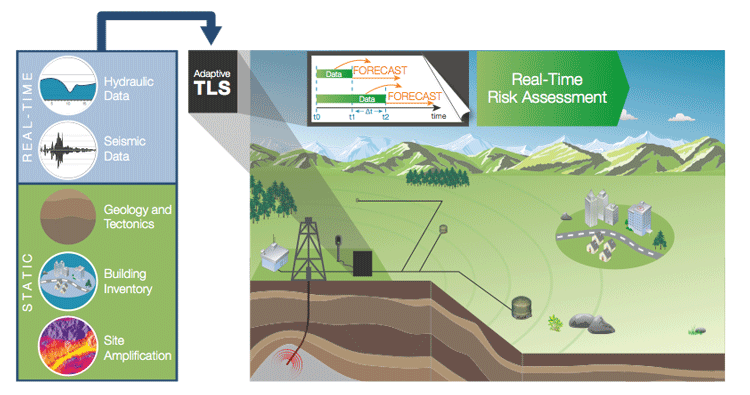Green, Orange or Red: Limiting Induced Seismicity Through Adaptive, Data Driven Traffic Light Systems
Within the first phase of the SCCER-SoE, the Swiss Seismological Service at ETH Zurich with the support of Geo-Energie Suisse developed an innovative traffic light system aiming to limit potential negative effects of induced seismicity. It is based on quantitatively assessed thresholds, and updated on the fly, as soon as new data becomes available. It has been validated on a multitude of induced seismicity datasets and successfully deployed for the first time at the geothermal test site in Grimsel. In the future, it will be applied, tested and refined at various national and international sites.
Traffic light systems (TLS) are commonly used to mitigate the induced seismicity risk by modifying the fluid injection or extraction profile. TLS are based on a decision variable (e.g., earthquake magnitude, peak ground motion) and a threshold above which action must be taken, such as stopping the injection or reducing production rates. Within the SCCER-SoE, we are developing the next-generation of traffic light systems: data-driven and adaptive TLS, termed adaptive traffic lights systems (ATLS).
ATLS are based on a quantitatively assessed threshold, providing an objective and statistically robust mitigation strategy. Forecasts are updated in real-time and different forecast models are combined to enhance the robustness of the predictions, analogue to what is commonly used in weather or climate forecasting. ATLS enables risk-based decision-making that also considers building vulnerability and local soil conditions. ATLS allow for a fair and transparent regulatory process where operators and authorities agree beforehand on an acceptable level of risk to be adhered through all stages of the project. ATLS does not guarantee financial success, but enables operators to maximize their stakes.
Future applications of the ATLS system within the SCCER-SoE are pilot and demonstration sites in Switzerland. In collaboration with the project DESTRESS, the ATLS technologies will also be deployed at various geothermal sites in Europe. ATLS are part of a broader effort of the Swiss Seismological Service to support cantonal authorities as well as operators of current and future deep geothermal energy projects in Switzerland. The activities are part of GEOBEST-CH, an initiative financed by the Swiss Federal Office of Energy and EnergieSchweiz.

